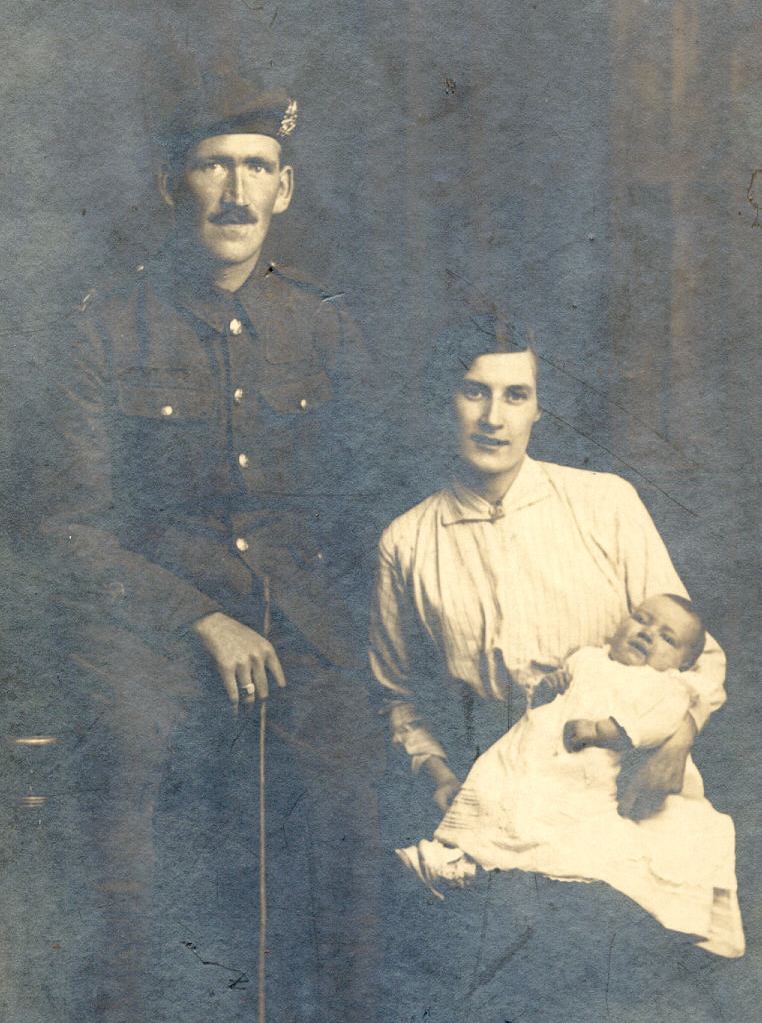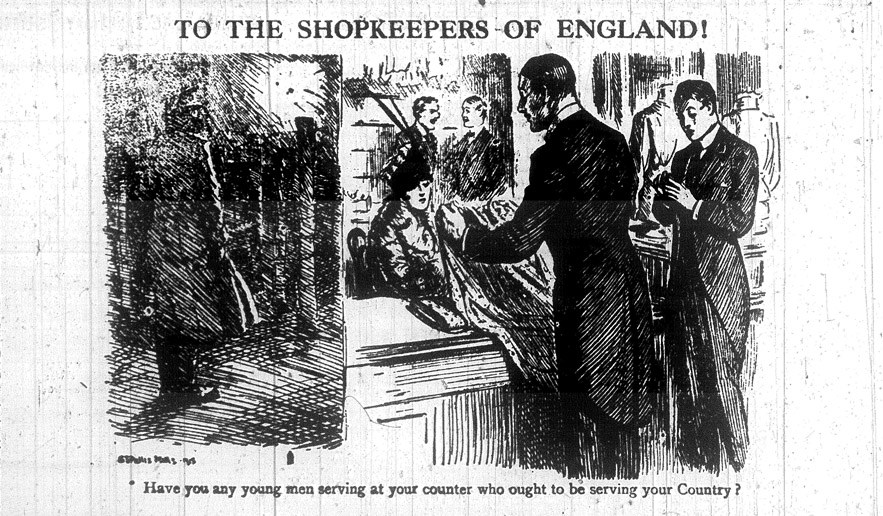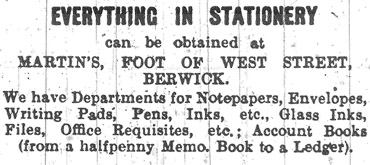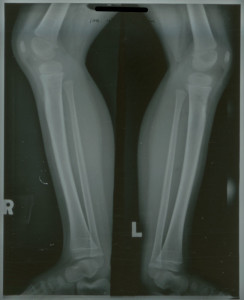Part of the criteria for our successful bid with the HLF was that Northumberland At War should use social media websites more. One way of getting our longer stories across was the development of our own blog.
We were contacted by Ted Milburn following our first blog on ‘Northumberland Airship Bases’ by Malcolm Fife. It was at this point that Ted mentioned the story of his grandfather and I thought it would be fantastic to share this with the rest of the world. So here it is:-
My grandfather’s clock…..
…….is a hundred years old. It was presented to my grandmother and grandfather on the day of their wedding, 26 December 1914, and bears the inscription “Presented by the Sergeants of 1st Bn Tyneside Scottish to Coy Sgt Major Dale on the occasion of his marriage”. The glass case below the clock is home to his Tyneside Scottish Cap Badge. Nowadays we do not wind up the clock and set the time. We have stopped it at 7.31 – marking the same time, as on that sunny morning of 1 July 1916, when whistles were blown, and four battalions of the Tyneside Scottish Regiment moved towards the German trenches in Mash Valley on the first day of the Battle of the Somme. It is our little memorial to his life.
Richard Albert Dale had been a police constable in Newcastle for two years before he volunteered to join the Tyneside Scottish in September 1914. He moved from his home in Clones, County Monaghan in 1912 – having completed training as a policeman in Ireland, and it is clear from the speed and enthusiasm with which he enlisted that he was keen to be associated with a regiment which had strong links and loyalties in north east England, his chosen home.
His army number was 20/8 – the “20” related to the 20th Battalion Northumberland Fusiliers, and the “8” indicated that he was the eighth man to enlist in that regiment. The four battalions of the Tyneside Scottish and Tyneside Irish Regiments were part of the newly created army of Kitchener’s volunteers, but were in reality Northumberland Fusiliers. The regiment recruited locally throughout Tyneside, and notably within Northumberland and County Durham – so Richard Dale was amongst men from Cramlington, Seghill, Morpeth, Ashington as well as those from Tyneside and County Durham. Men flocked to sign on.
Soon the 1st Battalion were moved to Alnwick, along with over 1000 other Tyneside Scottish and Tyneside Irish soldiers. They were housed on the east side of Alnwick Castle where a huge hutted camp had been built in the fields to facilitate training in readiness for their subsequent departure for France. Alnwick camp was their base from January 1915 until January 1916. They marched from Newcastle to Alnwick in snow and biting wind and stayed overnight in Morpeth, in a number of community and church halls. For almost a year in Alnwick they trained in the use of rifles, machine guns, grenades and other weaponry and were tested in marching, drill and the skills required in the laying and cutting of barbed wire and living in trenches. The picture below shows Richard Dale (extreme left) leading group of soldiers through Alnwick streets.
In addition to army training, a social network developed in the camp. In off-duty moments there were inter-regimental competitions in sports and games, and the customary rivalry on the football fields and cricket pitches. There are reports in regimental records of a number of soldiers keeping pets, and like many regiments, some of the units had mascots.
The above picture shows a grouping of regimental colour sergeants and sergeants taken at the Alnwick camp, illustrating behind them the huts to which the lads gave nicknames, such as “Knockout Villa”, “The Crackers Hut” and “The Pig and Whistle”. Richard Dale is at the centre in the back row and he has an owl on his arm – (for which I have no authentic explanation!).
The newly married Elizabeth Dale lived with her retired foster parents John and Isabella Eskdale in Heaton, Newcastle – although they later moved to Edward Street in Morpeth, where Elizabeth rented and ran a little sweetie shop in Newgate Street opposite Wm. Stokers the Butcher. She was well known to local shopkeepers and the schoolchildren of Morpeth throughout her life in the town. Visits to Richard during his year in Alnwick were often and from time to time he was able to get leave to go home. Before long she became pregnant. Amidst the joy, they must have both wrestled with concerns relating to Richard’s imminent departure for France and the uncertainty of the future.
Movement orders arrived in January 1916. The eight Tyneside Scottish and Tyneside Irish Battalions left by train from Alnwick Station and travelled via Salisbury Plain to join the other regiments in 34 Division in Warminster, then forward to embark at Southampton Harbour, for Le Havre, Abbeville, St. Omer, Blendeques and Wardeques. The volunteer soldiers of Northumberland, Durham and Tyneside were on their way to the Somme.
Richard must have been delighted to be granted compassionate leave so that he could briefly return to see his newborn daughter and Elizabeth. Muriel (my mother) was born on 10 February 1916 and this visit by Richard was the only time that he saw her before having to travel back to his regiment which was moving into the Somme region.
The war in France had changed by 1916. At the beginning of hostilities in 1914, WW1 was a war of movement – by the time of the Battle of the Somme, it had changed to being a war of stagnation. Both sides of the conflict were well dug in, facing each other in deep trenches which stretched from Switzerland to Normandy. The 1st Bn Tyneside Scottish were positioned in trenches near Ouvillers, flanked on the left by 2Bn The Middlesex Regiment and on the right by 4th Bn Tyneside Scottish. Whistles blew at 0731hrs and the pipers started to play the “Haughs of Cromdale” – men walked forward, in open countryside, to cross the 800 yards towards the German lines………..
CSM Richard Dale died before 10 o’clock on that morning.
The official casualty rates for the 1Bn Tyneside Scottish for that day indicate 27 officers and 557 men were injured or killed – a total of 584 out of the 800 who had started in the attack. A, 73% casualty rate.
We would like to express our sincere appreciation to Ted Milburn in supplying this article for the Northumberland At War Project.








